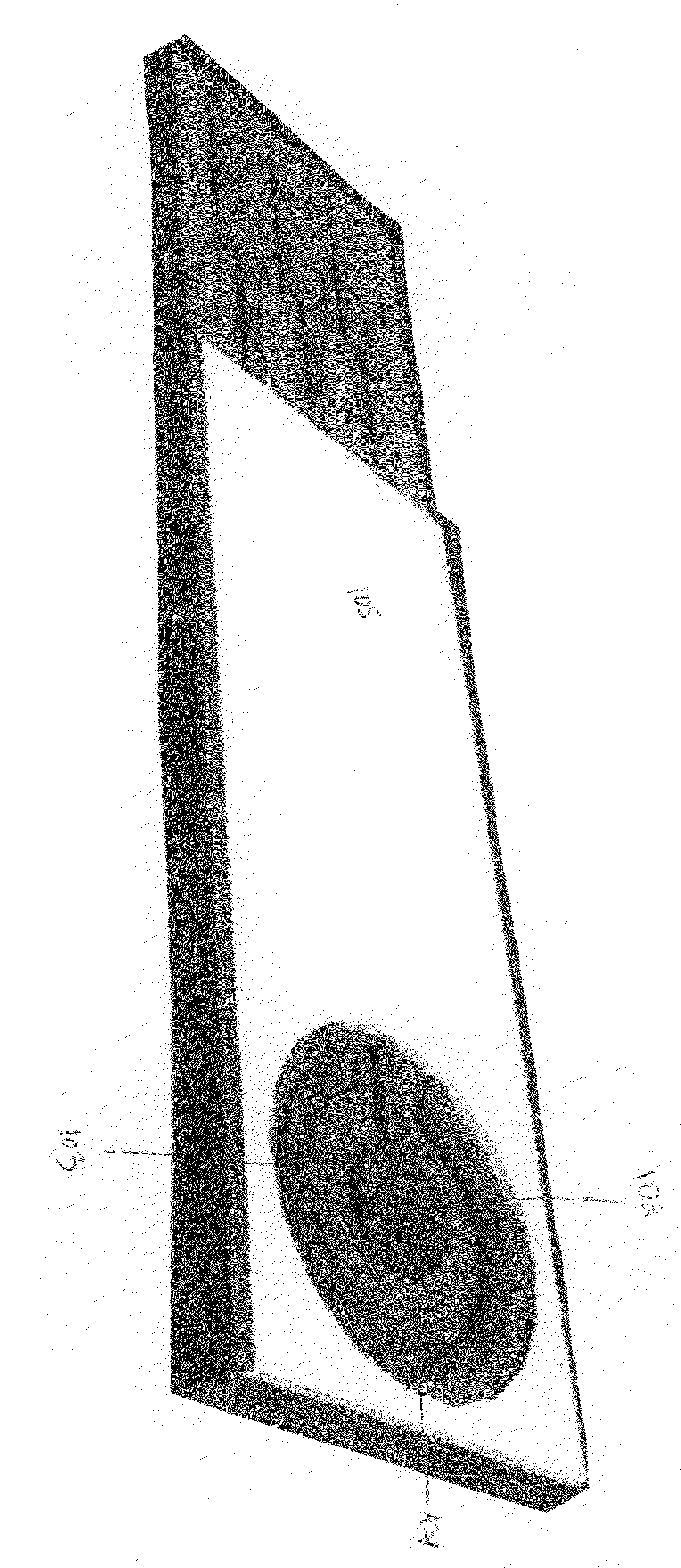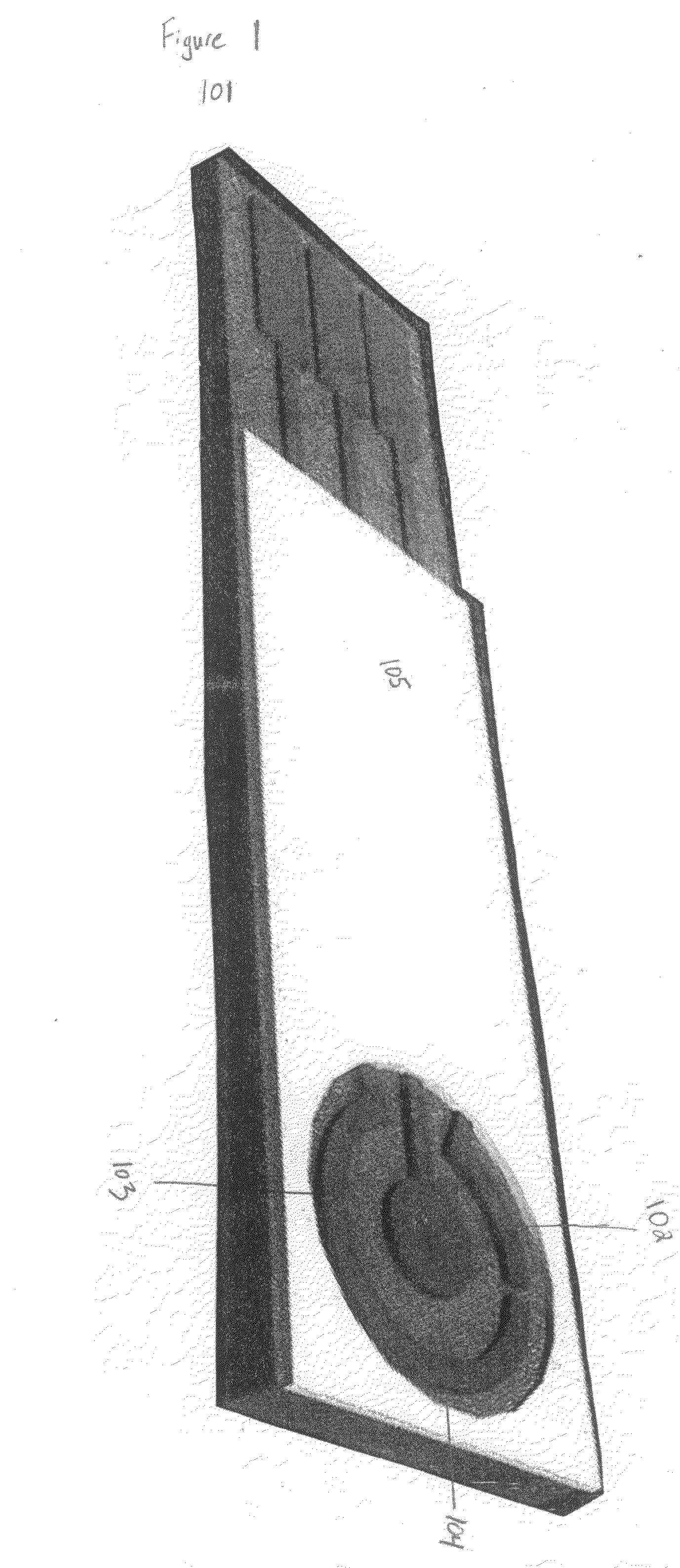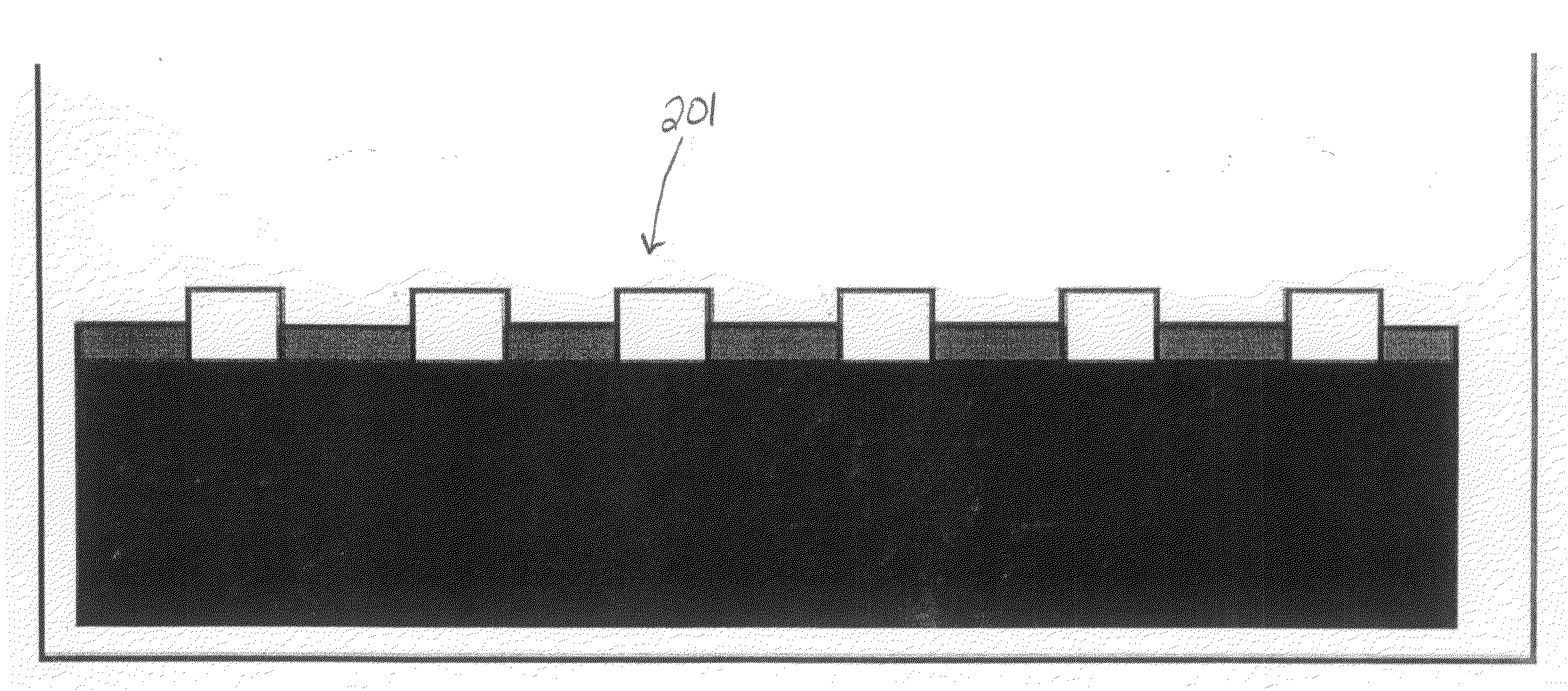Nanostructured electrochemical biosensor with aptamer as molecular recognition probe
a biosensor and nanostructure technology, applied in the direction of electrolysis, diaphragm, immobilised enzymes, etc., can solve the problems of inability to use cisplatin as a point-of-care device, inability to potentially implant cisplatin for in-vivo detection, unable to detect cisplatin in vivo, etc., to achieve rapid determination and rapid detection of analyte
- Summary
- Abstract
- Description
- Claims
- Application Information
AI Technical Summary
Benefits of technology
Problems solved by technology
Method used
Image
Examples
Embodiment Construction
[0041]Electrochemical biosensors are increasingly finding applications in monitoring various analytes by utilizing drug-DNA interaction because they are relatively simple and inexpensive to build, reliable, and minimize the sample volume required. Moreover, electrochemical sensors can be fabricated in small chips which can be potentially implanted into the site of tumor removal. However, it remains a challenge to improve the sensitivity and the response time of the electrochemical biosensors. The present invention applies nanotechnology to biosensor fabrication and has opened a new pathway to improve the performance of biosensors. This invention leads to miniaturized of devices with high sensitivity and rapid response for real-time analysis of small volume samples.
[0042]The present invention is a nanostructured electrochemical biosensor. The biosensor comprises an electrochemical cell 101 that can be plugged into a portable electric controller. The electrochemical cell includes a re...
PUM
| Property | Measurement | Unit |
|---|---|---|
| electrochemical | aaaaa | aaaaa |
| electrochemical redox | aaaaa | aaaaa |
| distance | aaaaa | aaaaa |
Abstract
Description
Claims
Application Information
 Login to View More
Login to View More - R&D
- Intellectual Property
- Life Sciences
- Materials
- Tech Scout
- Unparalleled Data Quality
- Higher Quality Content
- 60% Fewer Hallucinations
Browse by: Latest US Patents, China's latest patents, Technical Efficacy Thesaurus, Application Domain, Technology Topic, Popular Technical Reports.
© 2025 PatSnap. All rights reserved.Legal|Privacy policy|Modern Slavery Act Transparency Statement|Sitemap|About US| Contact US: help@patsnap.com



